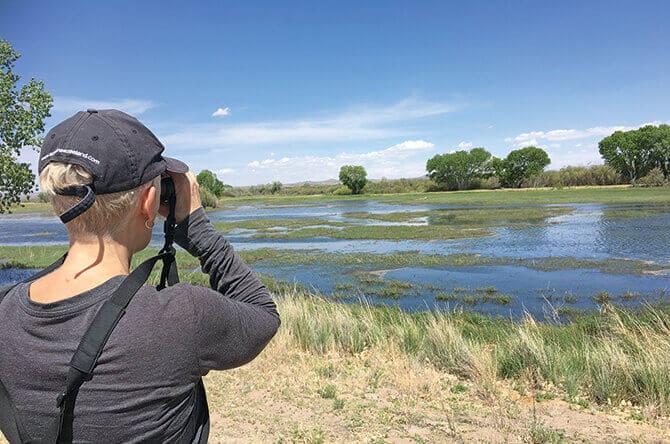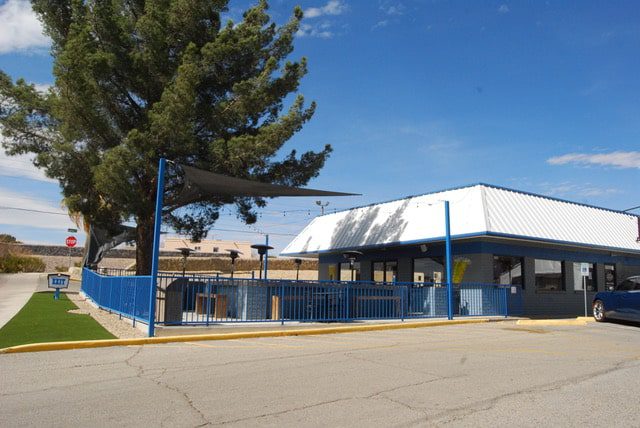The shepherd Bartolo di Fredi kneels before the newborn baby Jesus. Others have brought gifts to celebrate his birth. The shepherd agonizes, “My gift? I have no gift! O Lord, take me . . . and all I possess . . . a symbol of the world’s forgetfulness of Thee.” This is the end of a liturgical drama of the Nativity — but one with a twist. It focuses, in part, on redemption. But it begins with Lucifer being cast from Heaven. He hears the prophet announce the birth of Christ and is enraged, intent on destroying God’s plan. As the shepherds sit for supper, those who have heard the angelic choir proclaim the birth of Christ tell the others. Bartolo scoffs and chides them. He demands his supper of frijoles, olives, and fish . . . and a pot of ruby wine.
After eating, the shepherds sleep. While they slumber, Lucifer comes to tempt them with the seven deadly sins — pride, greed, lust, envy, gluttony, wrath, and sloth. Bartolo is perhaps the worst — lazy, drunken, gluttonous. He believes only in his own well-being. Then the Archangel Michael arrives and confirms the birth of Christ to the shepherds. One by one, they approach the newborn baby and offer simple gifts. Reluctantly, disparagingly, Bartolo looks upon the child, and he is filled with love and joy, repenting with a “take me!”
This is the personal message of the Nativity — not just that Jesus came to save but also to offer a path of redemption for a life well-lived.
The History of Liturgical Dramas
 Liturgical dramas have their roots in the Middle Ages, a time when only priests were literate. They used dramas to teach people the basics of Christianity — dramas that proved not only effective teaching tools but were also immensely popular. The first of these dramas was endorsed by Pope Gregory the Great in the 6th century and expanded in the 13th century by Thomas Aquinas.
Liturgical dramas have their roots in the Middle Ages, a time when only priests were literate. They used dramas to teach people the basics of Christianity — dramas that proved not only effective teaching tools but were also immensely popular. The first of these dramas was endorsed by Pope Gregory the Great in the 6th century and expanded in the 13th century by Thomas Aquinas.
The earliest Spanish liturgical drama dates back to 1134. Ten years before Columbus’ Atlantic crossing, costumes were incorporated into the play. In 1560, dances were added. At this time Lucifer, the devil, was also introduced into the drama. In the New World, Franciscan friars used the drama to teach Indigenous people. Actors dressed and talked as the Native Americans did, integrating these dramas into the local culture.
Many of us have seen one of these dramas, Las Posadas, the re-enactment of Joseph and Mary seeking shelter in Bethlehem, or attended performances centered on the crucifixion and resurrection at Easter time.
Los Pastores in the Mesilla Valley
This version of Los Pastores was first performed in the Mesilla Valley in 1961. The long, 300-year-old script for the zarzuela, or operetta, was shortened, combining dramatic dialogue in English with a choir performing all the songs in Spanish. Actors in the revitalized drama were dressed in costumes typical of Mexican peasants. The Devil, with horns and tail, is in bright red, Archangel Michael in gladiatorial attire, and the prophet and angels in flowing white robes. A reasonable expectation, Mary was dressed in a replica of the gown worn by La Virgen de Guadalupe, Mexico’s patroness.
Generations of Cast Members
The group of people in Mesilla and Las Cruces who formed the original 1961 Los Pastores del Valle de Mesilla troupe has now been together for more than 60 years. It started with about 100 members, who traveled to El Paso and Monahans, Texas; Phoenix, Arizona; and cities and towns throughout New Mexico. Member Bobbie Provencio says, “Los Pastores is like a family. We’ve been together a long time. Most of our current cast are our children and grandchildren.” Checking the roster of current and former troupe members, you learn there have now been four generations involved.
Joe Provencio, Bobbie’s son, was 10 years old when he got involved as a helper. His role changed to choir member and actor over the years. As a choir member, he recalls, “I’d say ‘hi’ to Roberta every time the choir met. She was 8 and I was 10.”
He left New Mexico for 6 years and rejoined Los Pastores when he returned. Both he and Roberta had grown up, but their friendship in the troupe turned to love and marriage. That’s a common thread in the fabric of this troupe.
 Member Fran Chavez says, “My parents and six of us kids have been part of this group. I started as an angel. That was 57 years ago.” She pauses to think. “It just wouldn’t be Christmas without the Pastores. It becomes part of you.”
Member Fran Chavez says, “My parents and six of us kids have been part of this group. I started as an angel. That was 57 years ago.” She pauses to think. “It just wouldn’t be Christmas without the Pastores. It becomes part of you.”
Randy Rivas relates, “My father was on the tech crew, and I helped him. Then I joined as an actor.” Now his parents have retired from Los Pastores. “But they look forward to watching their kids perform,” he adds.
Mary Ana Carlson has been with Los Pastores for about 20 years. “I like to sing,” she says. “I like to be part of history and part of the religious celebration.” Ted Powers, choir director since 1989, has been with Los Pastores since the 1970s. “Music has been an integral part of my life,” he says. An adult friend gave him a violin when he was 10, and he learned to play. “I haven’t quit since,” he adds, noting he also plays guitar, viola, cello, and bass. He played viola with the New Horizons Symphony Orchestra and is an active member of the Las Cruces Ukes, employing yet another instrument, the ukulele.
Ted also cites Tony Gomez, former Las Cruces police chief, who was choir director for years. It was Tony who recruited Ted as director in 1989. “Tony made us practice a song five, six, or more times until we got it the way he wanted to hear it,” Ted says. He explains music is more than notes on a page; it’s how it
sounds that’s important.
The Show Must Go On
Like all theatrical groups, it hasn’t always been able to “break a leg.” Rita Jo Sosa-Carver, who’s been with Los Pastores for 60 years, recalls a time in Albuquerque when there were only three members in the group. Rita explains, “So we put the words on the monitor and invited the audience to join in. Turned out, it was a wonderful performance.” On another occasion in Santa Fe, Joe explains, “The supports for our backdrop failed and the backdrop fell backward. We stopped the play to repair it.” In the interim, the bishop came on stage and told the audience, “When you make a donation, make it a good one. You can see they need the help.” With a broad smile, Joe says, “People donated about $700 that night.”
And so, Bartolo says his final speech, and the play concludes. Maybe. In Albuquerque, on one occasion, the moment Bartolo finished and the house was silent, a baby in the audience started whimpering and gurgling, just as if it were the baby Jesus on stage. No director could have cued the baby to do that. “It just happened,” Joe says. “It was an amazing ending.”
See Los Pastores
Los Pastores del Valle de Mesilla will perform this ancient liturgical drama Saturday, December 10, at Holy Cross Catholic Church, 1327 N. Miranda St. in Las Cruces at 7:30 p.m. There will be another performance at Holy Cross Retreat 600 Holy Cross Rd. in Mesilla Park, Sunday, December 11, at 5:30pm. There is no admission charge, but donations are welcome. After seeing Los Pastores, if you sing or act — or want to — and would like to become part of this Mesilla Valley Christmas tradition, contact Ted Powers at [email protected].
Will the Singing Cowboys Become the Sound of Silence?
Voz Vaqueros, the singing cowboys adorned with red bandanas, call themselves the Singing Men of Las Cruces, and they’ve been singing for more than 50 years.
The idea of Voz Vaqueros came from George Jarden, Jr., a medical doctor who loved to sing. He was a member of the Lafayette College choir in Easton, Pennsylvania. In 1971, after he had moved to Las Cruces, he brought together a group of men, many already part of Los Pastores. He talked them into forming Voz Vaqueros. The reason was obvious, especially if you’ve ever listened to an all-male choral group. “Nothing can quite match the effect of an all-men’s chorus,” says Ted Powers, one of the veteran Voz Vaqueros. Ted recalls 1987 director Ken Shelly calling their unique sound “like chocolate for the ears — rich and thick.” We can all relate to that.

The current director, Eric Sletten, joined when he was 14 years old.“At 48, I’m still the youngest member,” Eric says and, as the group ages, he adds, “I hope I can change that.” He left Voz Vaqueros to serve in the U.S. Navy. But he missed the singing. Upon discharge, he found himself back with the singing men as its director.
At one point in time, Voz Vaqueros did as many as nine concerts a year. Not long ago, the group started performing at the New Mexico Farm & Ranch Heritage Museum’s Cowboy Days, which takes place in March each year.
At one Christmas party where the group performed, Eric was nearly “done in,” he says. He led groups at 12 tables in the “Twelve Days of Christmas,” each contributing one line in the song. Eric had to run from table to table to cue each group when to come in. It may have exhausted him, but it’s certain to have left the party revelers in hysterics. Those were the good days. But getting young men involved today has become a challenge. Eric says this may be Voz Vaqueros’ last year. They had a Christmas concert scheduled for December 17, but it has since been canceled. Eric feels Voz Vaqueros is “a very special group of dads, always supporting each other. It’s always been like a family. In fact, the son of an original member now sings with us.”
The world changes. People are busy and have different ideas than men 50 years ago. But Ted says, “There surely must be young men who love to sing. It would be such a shame to lose this group.”
“If you sing, if you love playing your guitar,” Eric offers an invitation, “think about tying on a red bandana and becoming one of us . . . a [member of] Voz Vaqueros.”
To learn more, email Voz Vaqueros at [email protected].
Story by Bud Russo | Photos courtesy Julian Onofre and courtesy
Originally published in Neighbors magazine.
Posted by LasCruces.com















